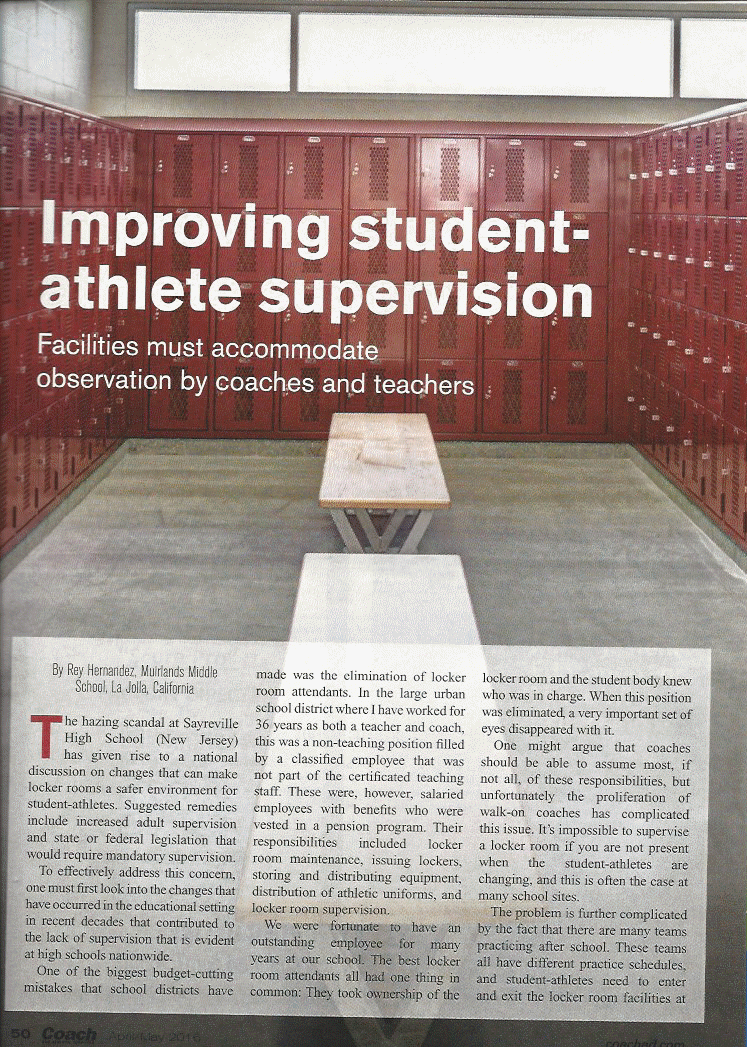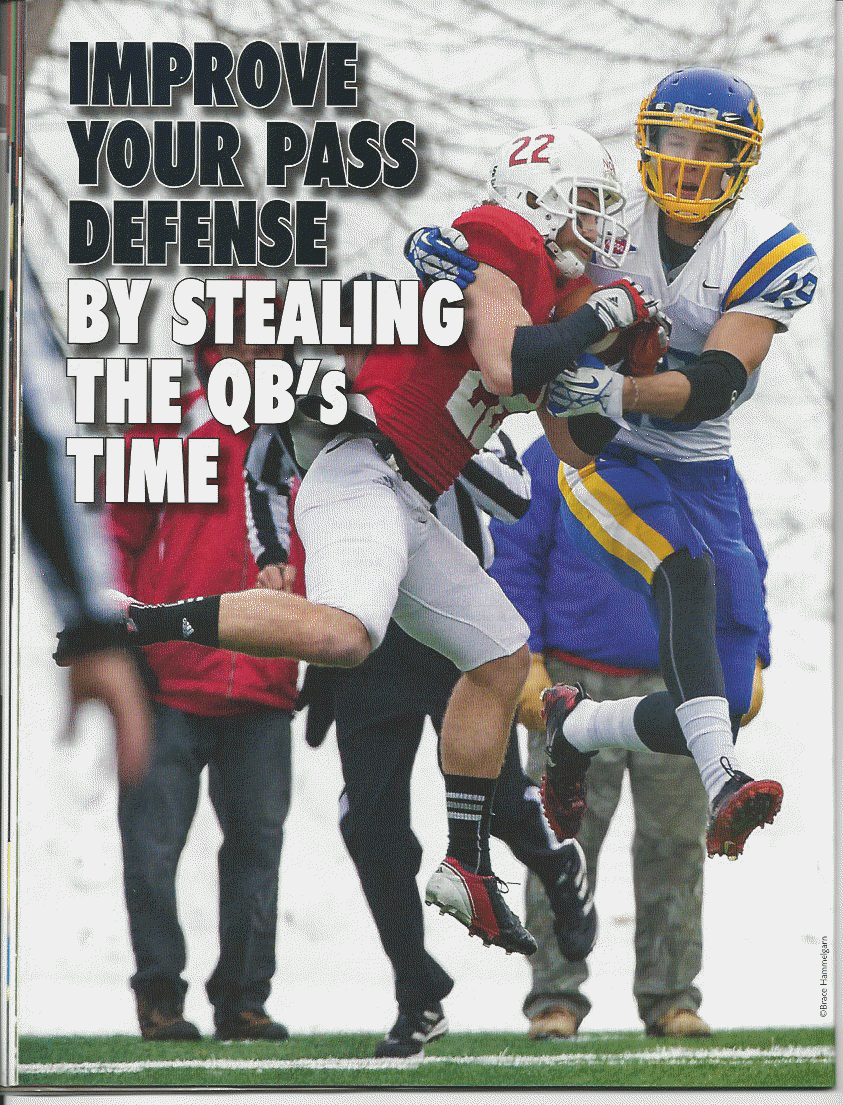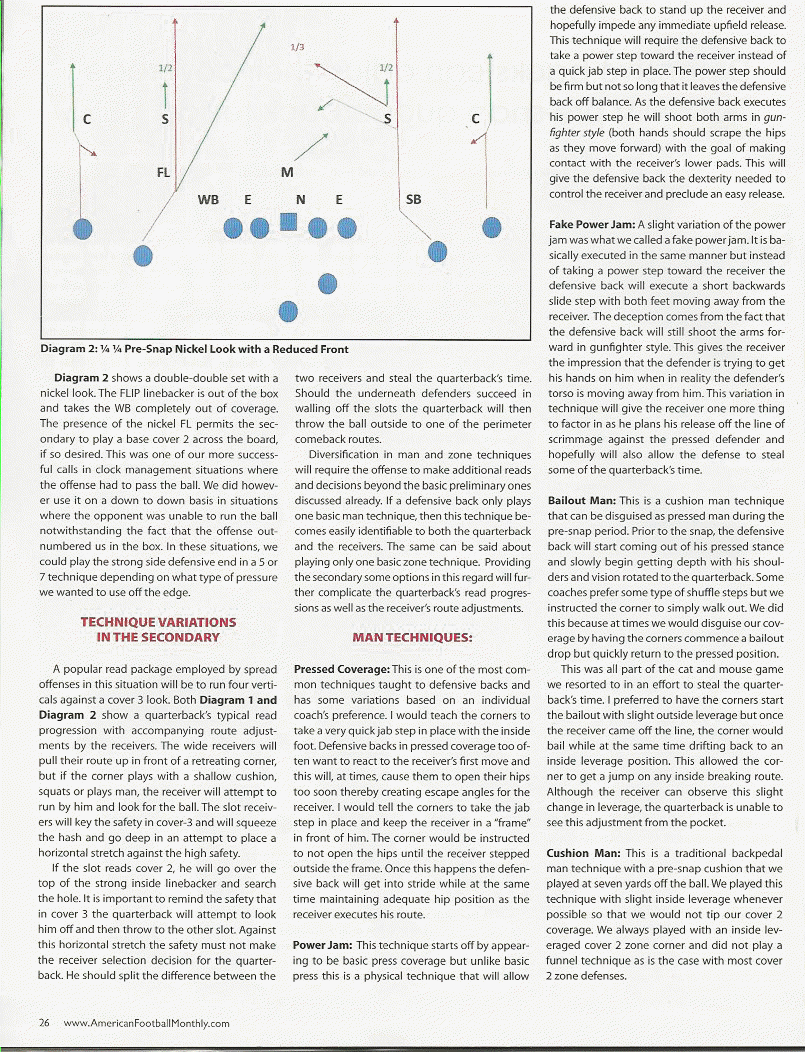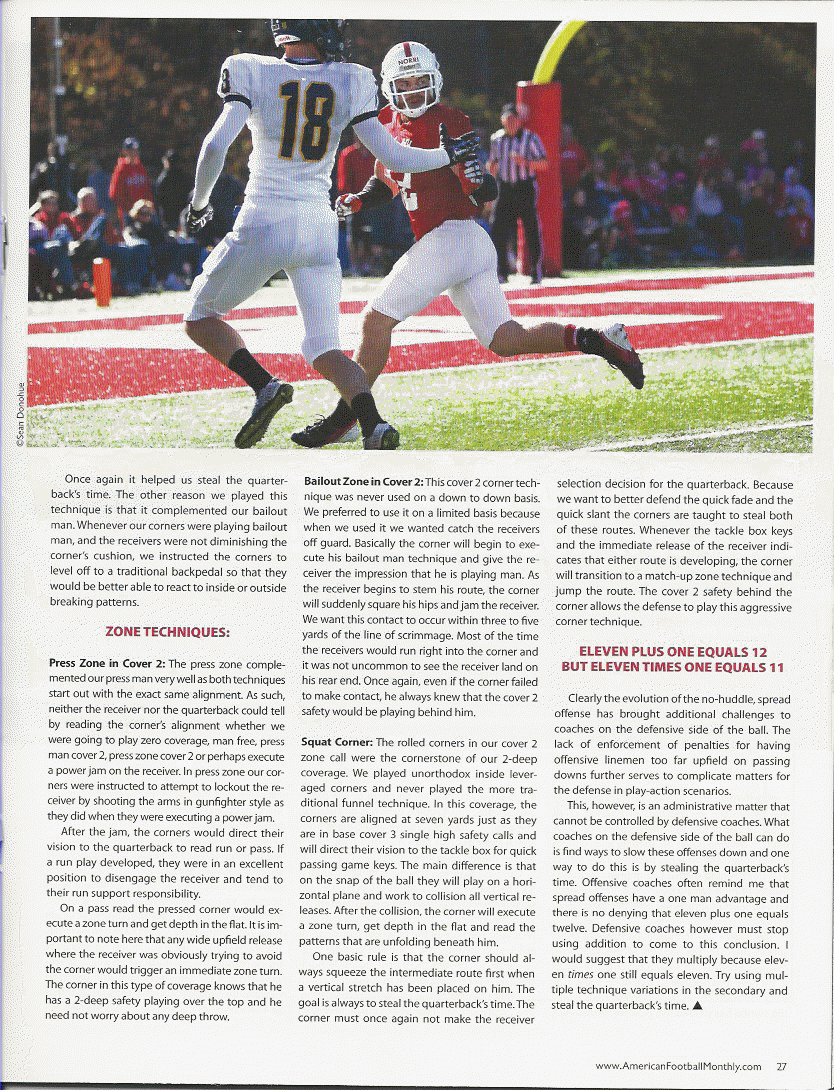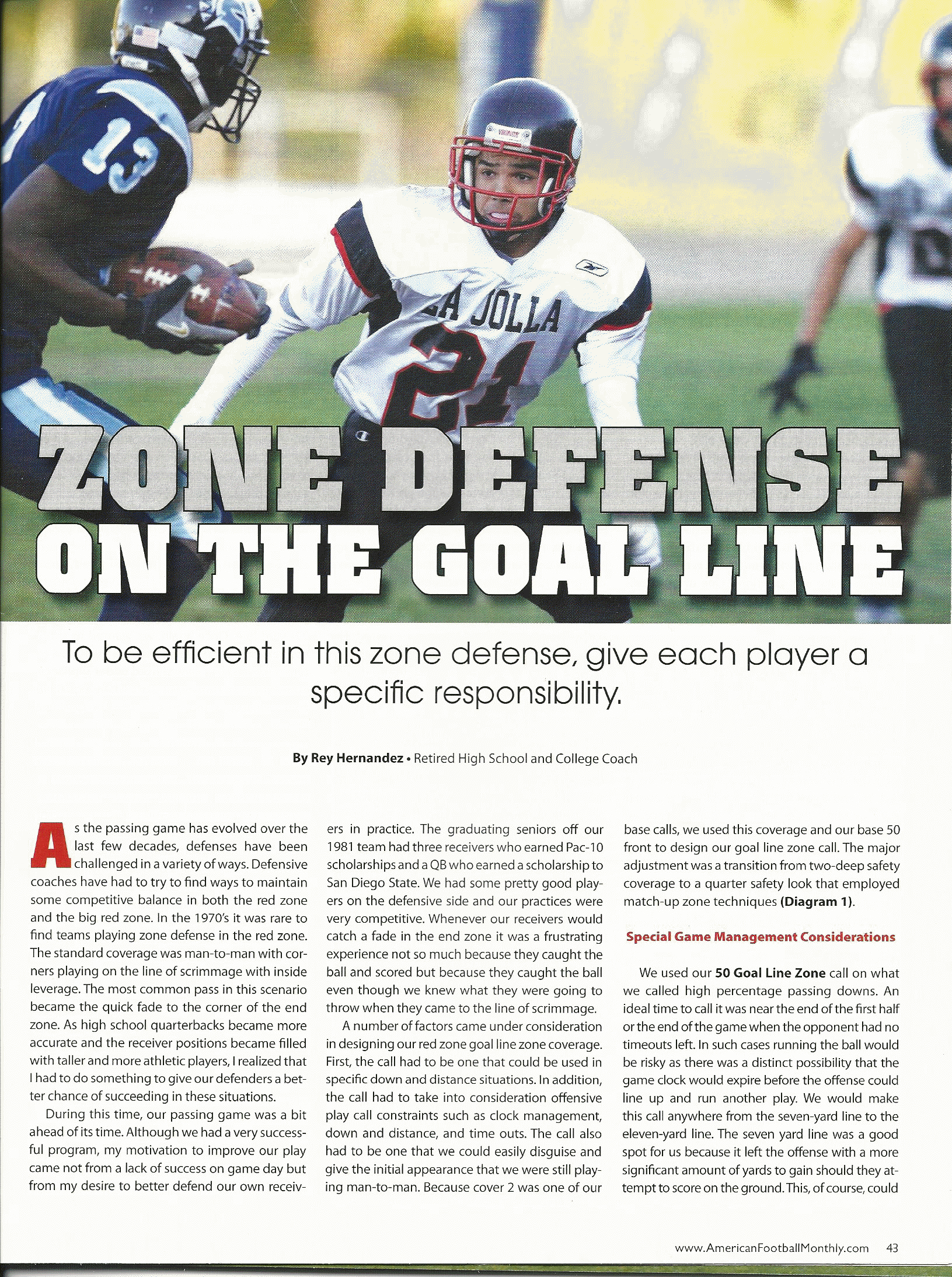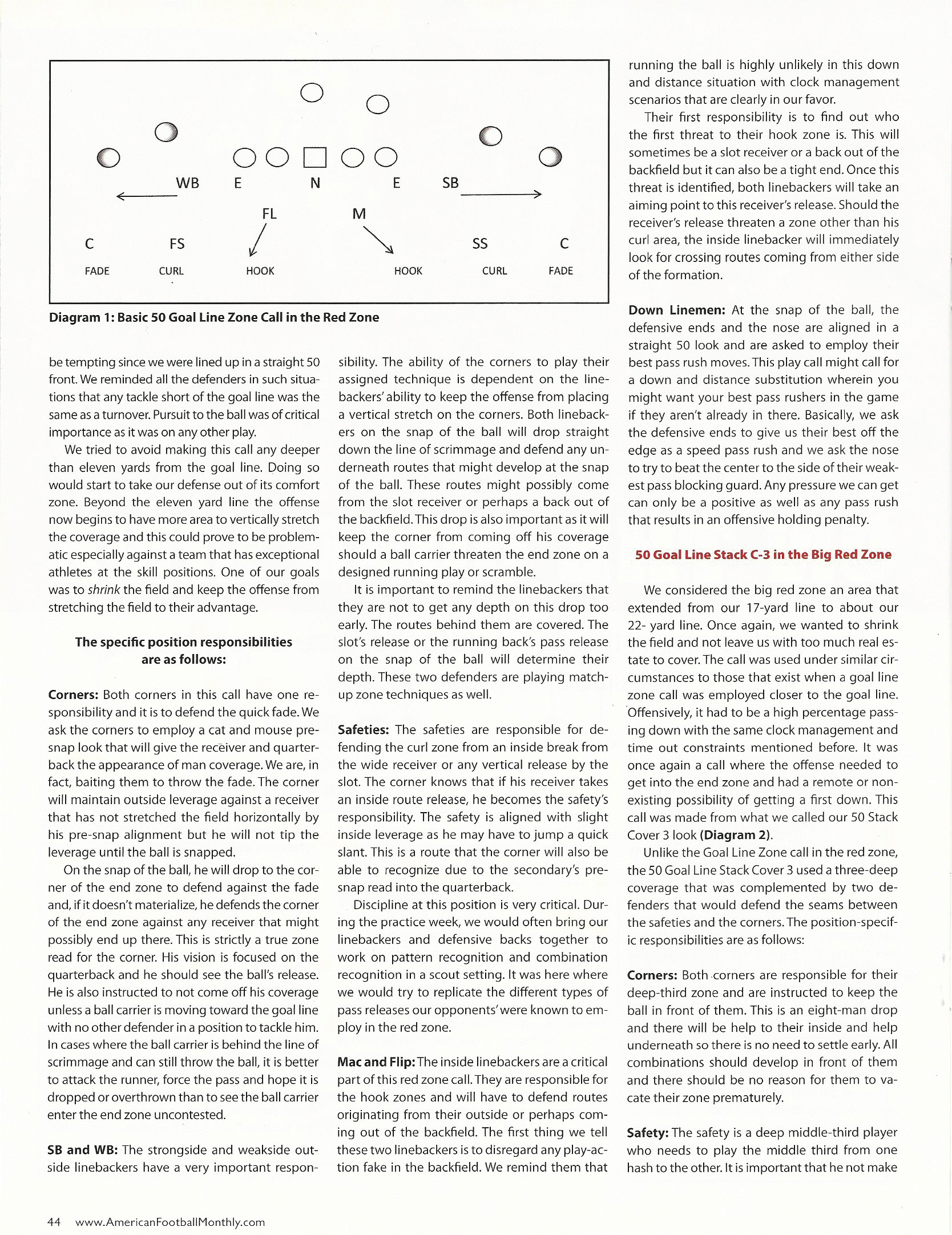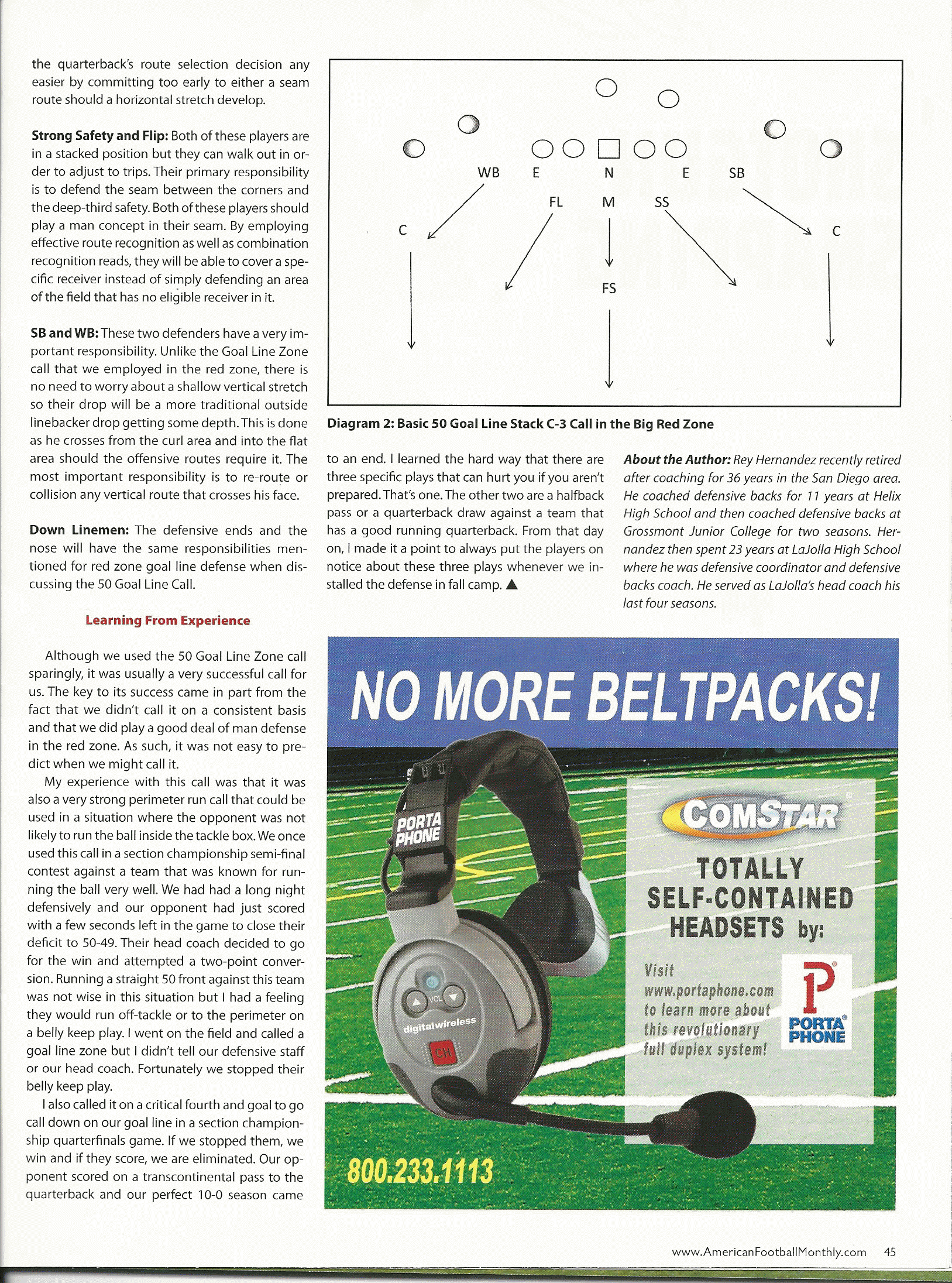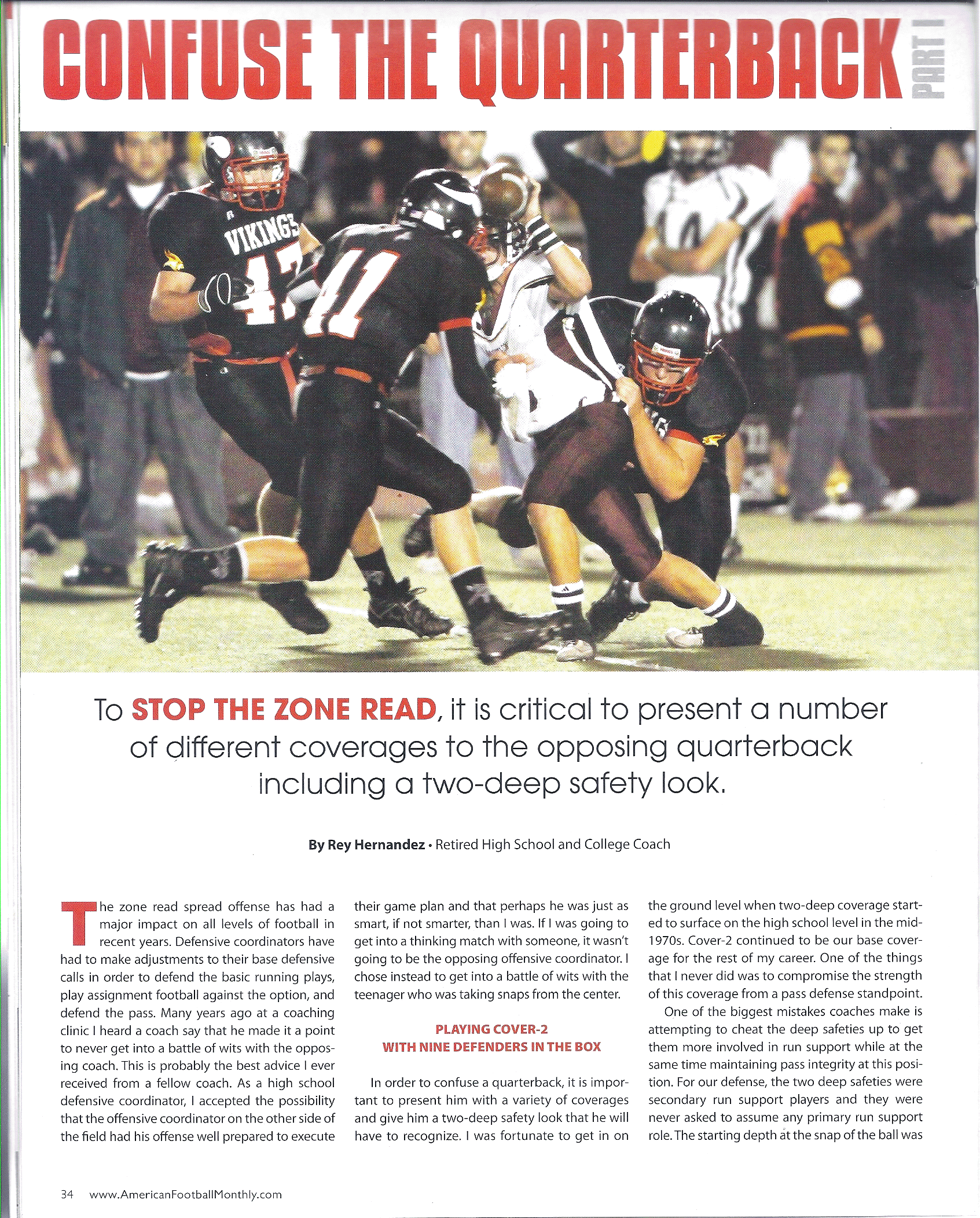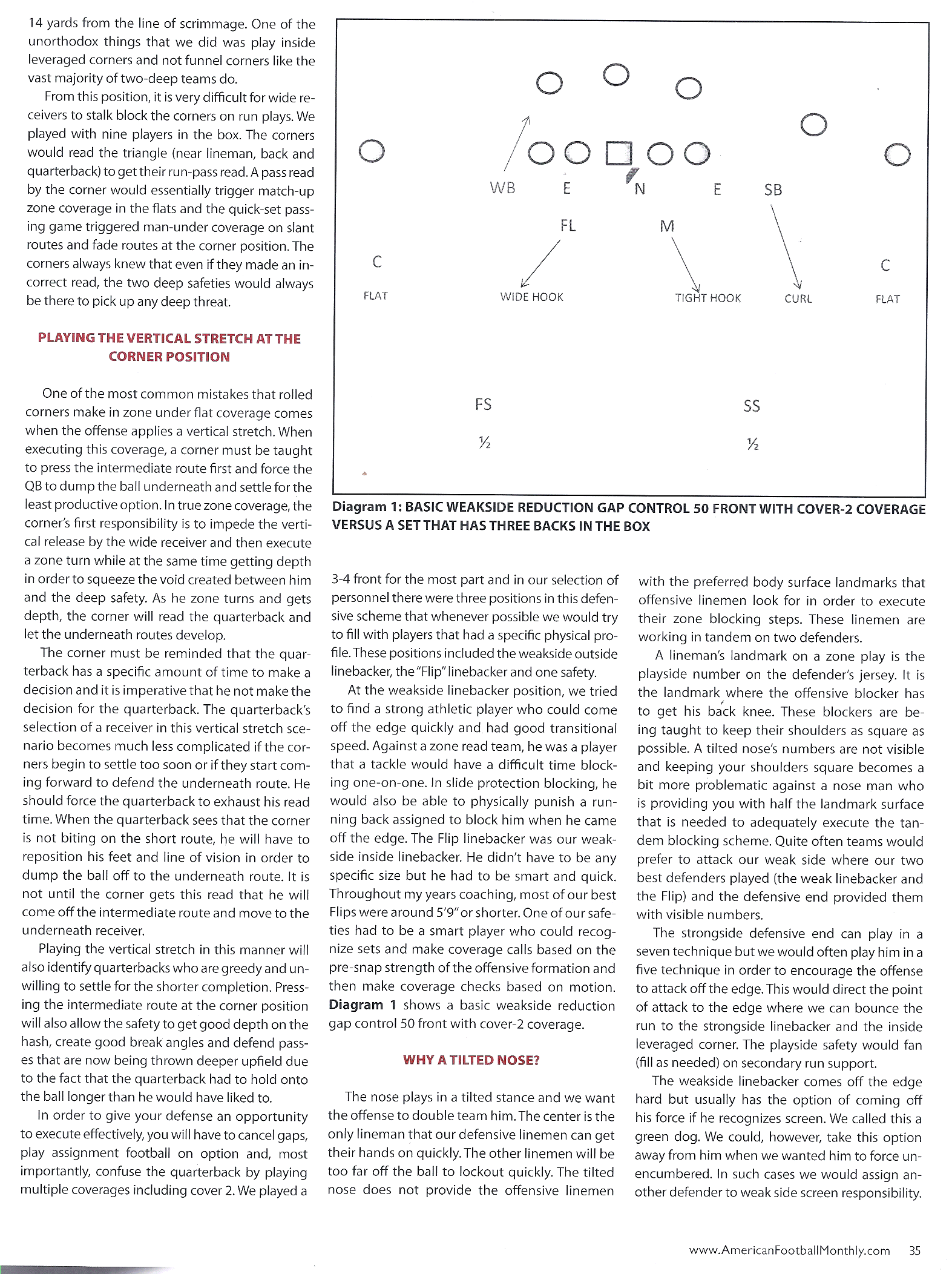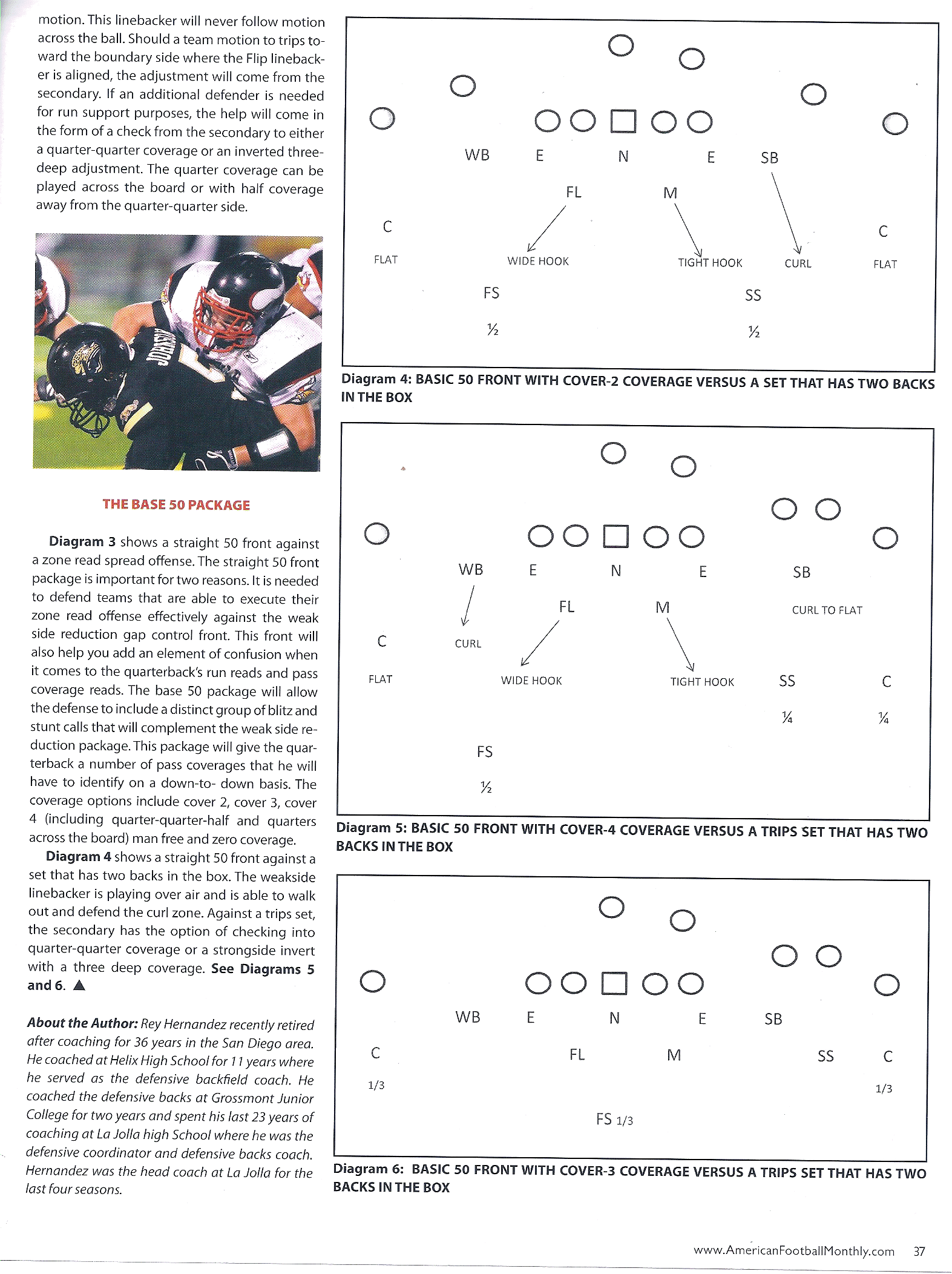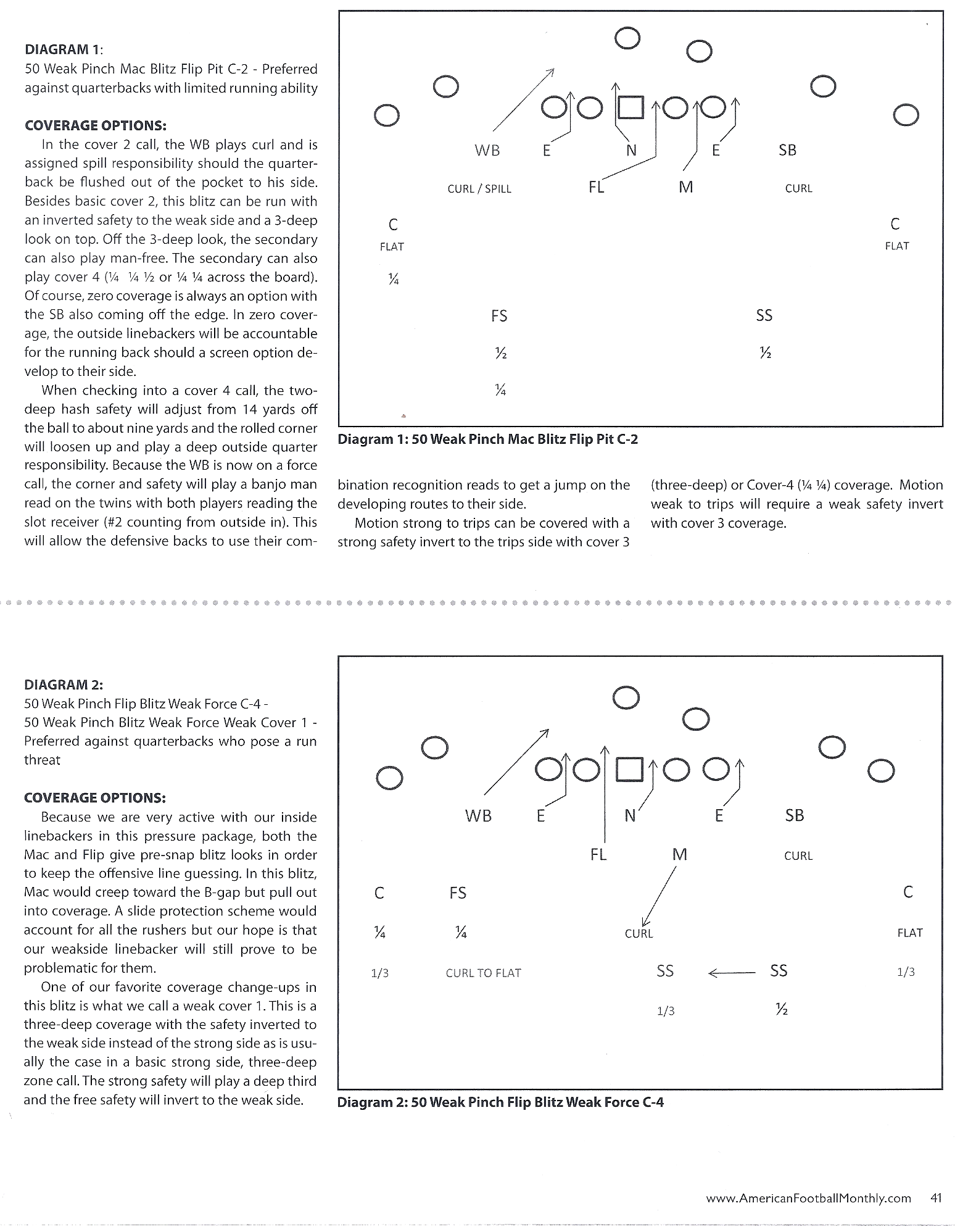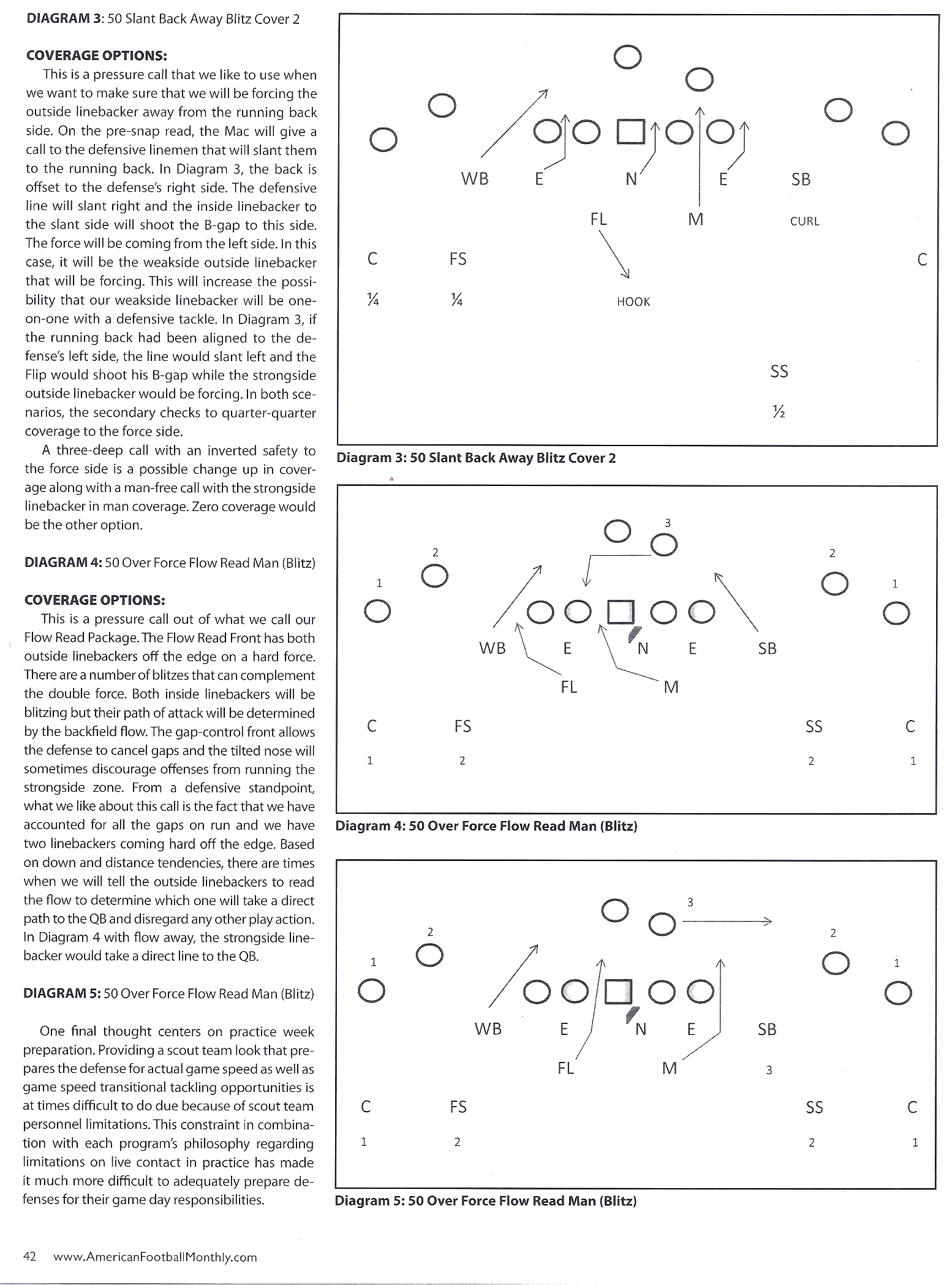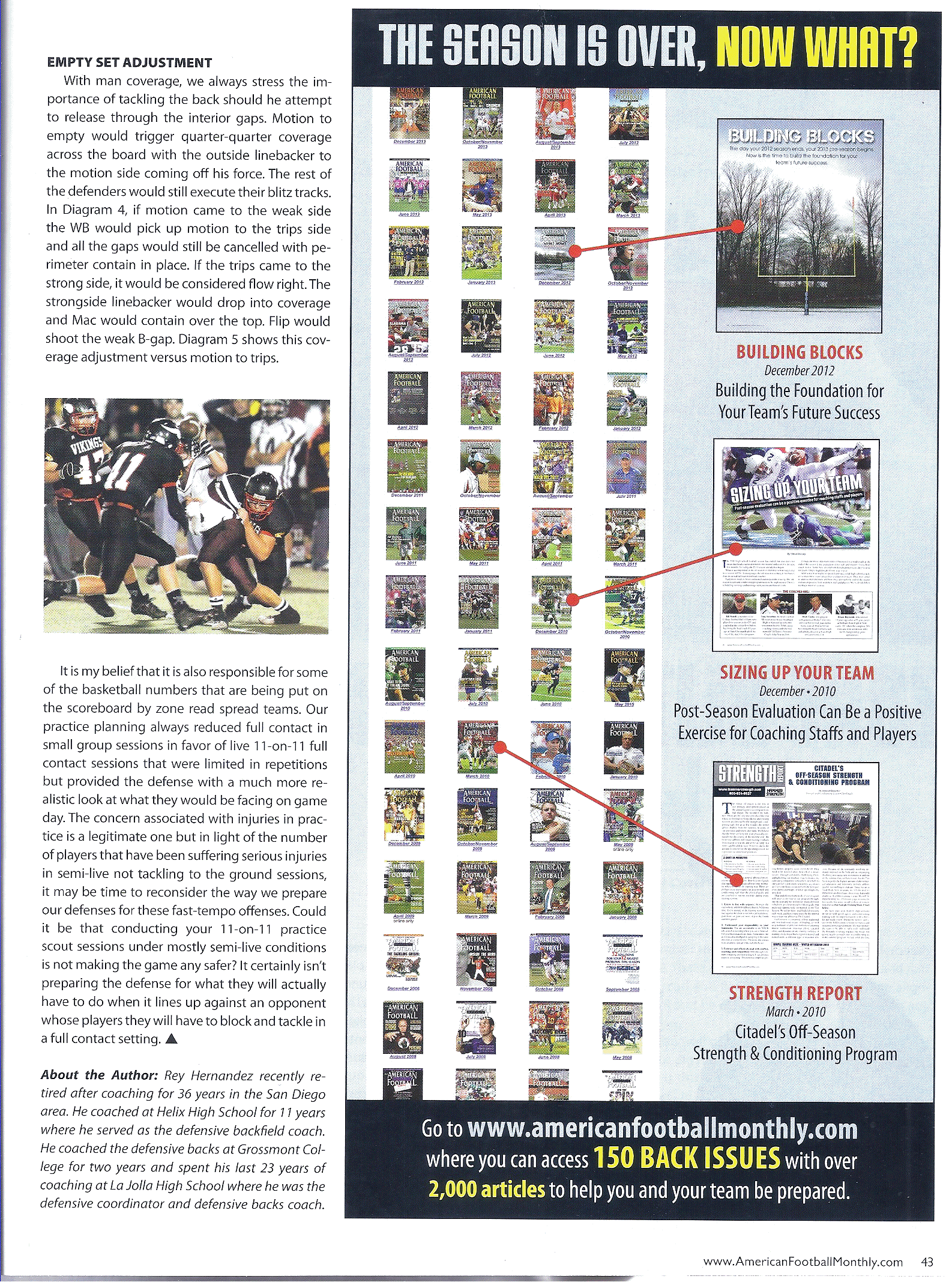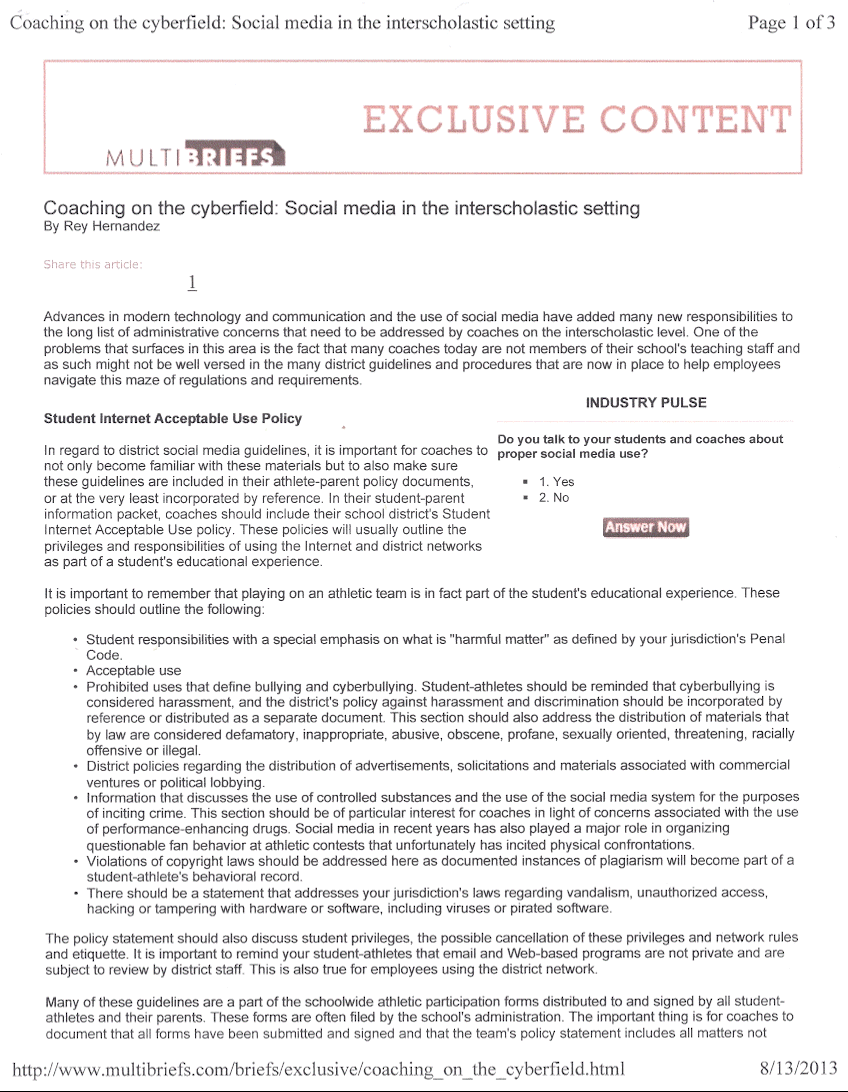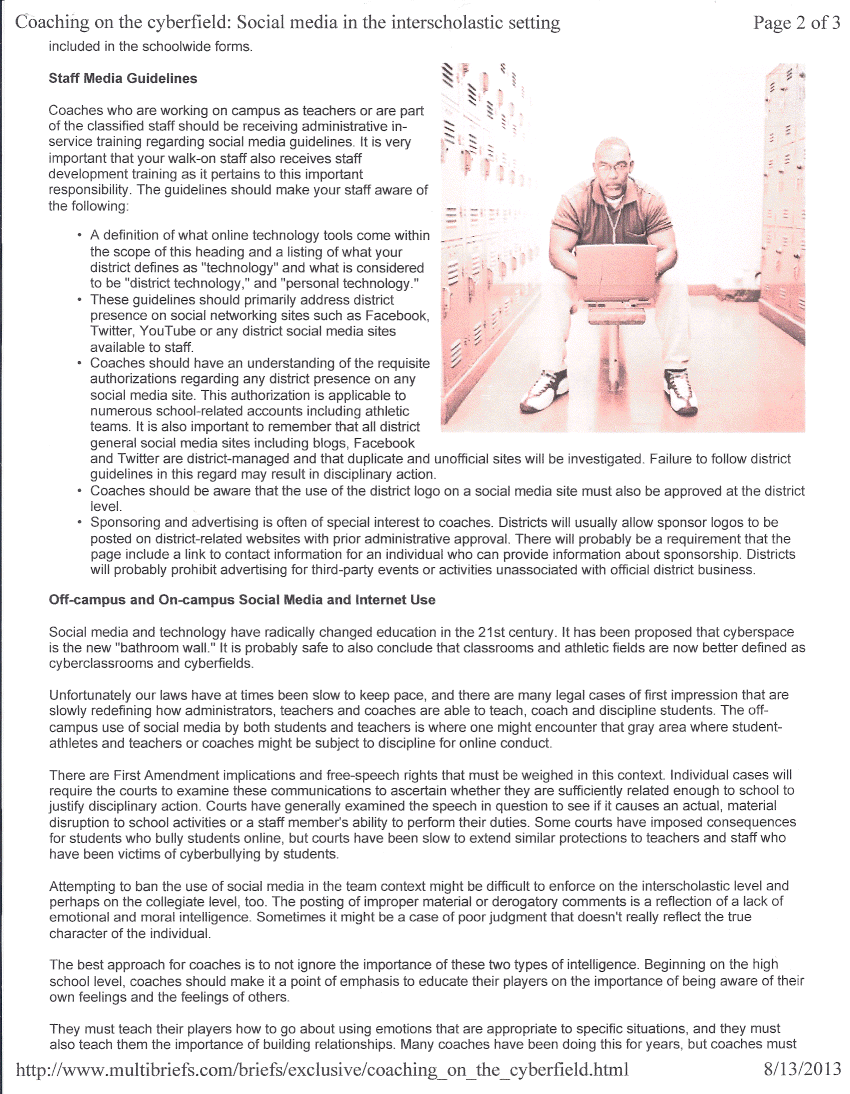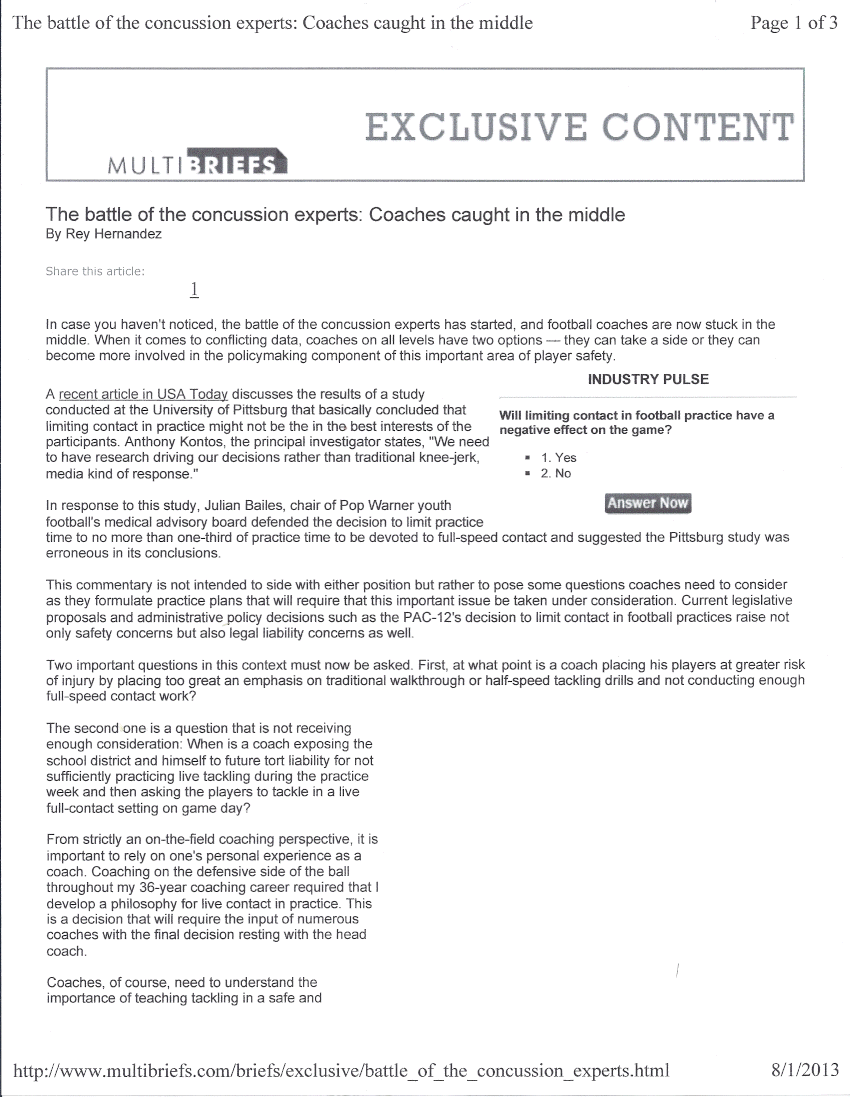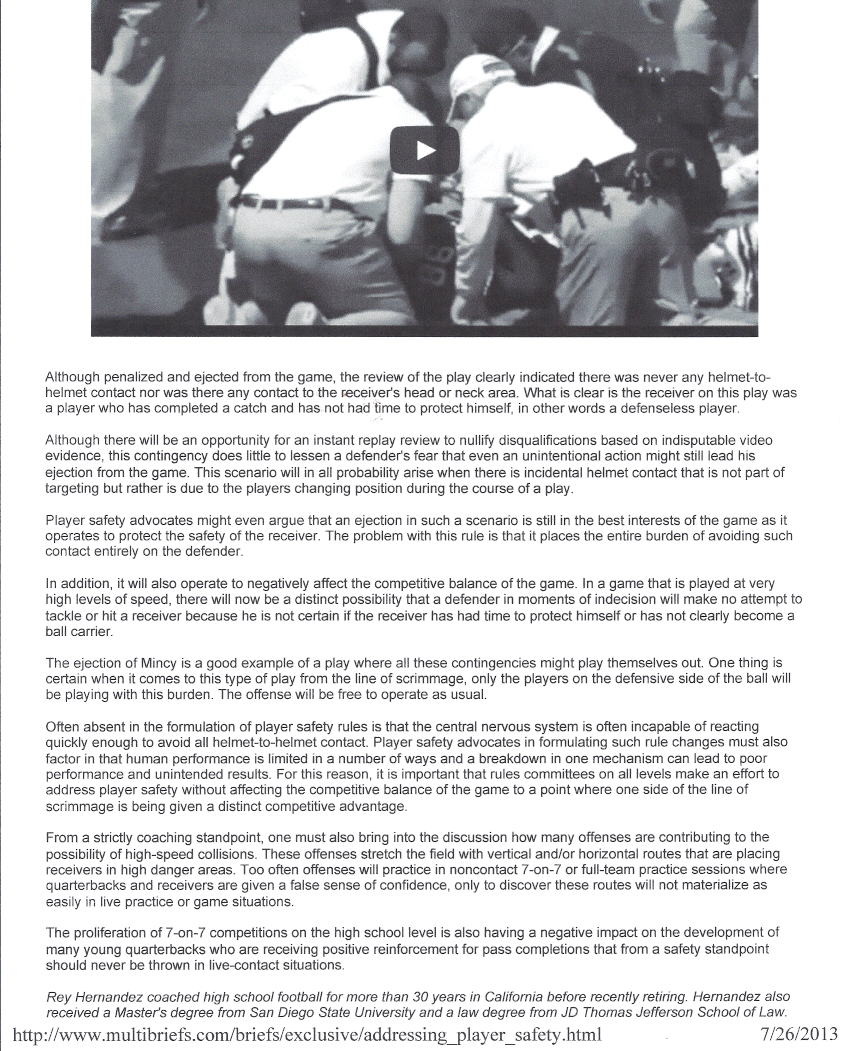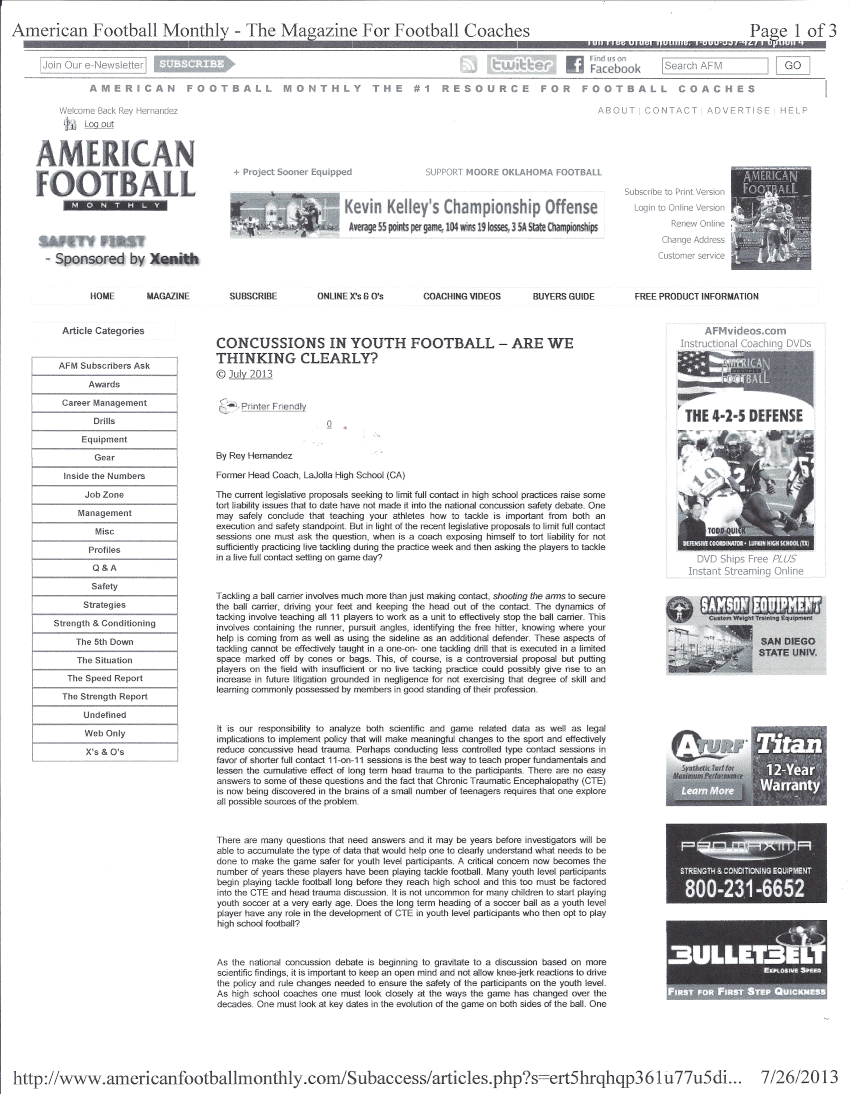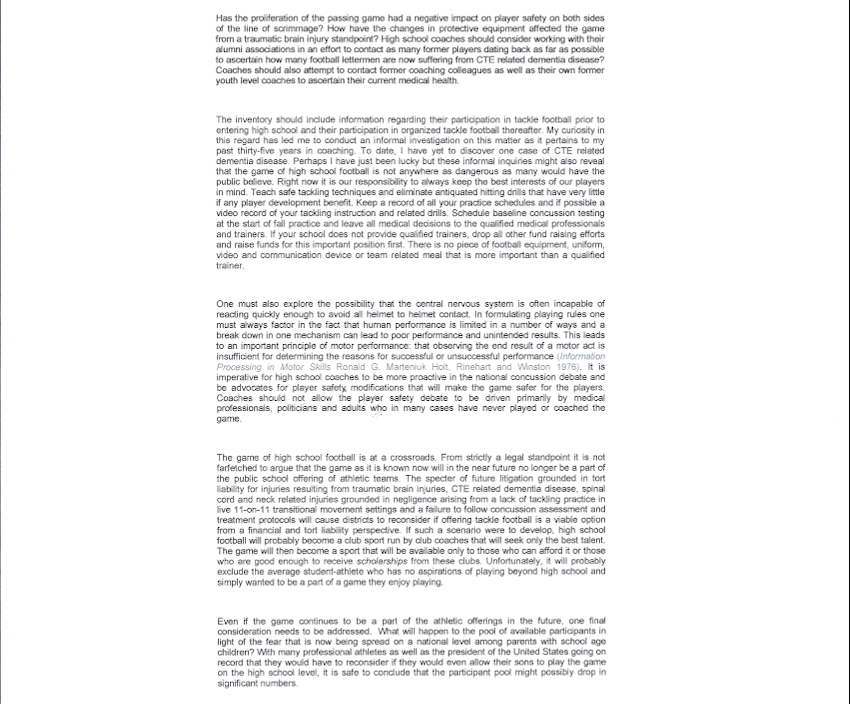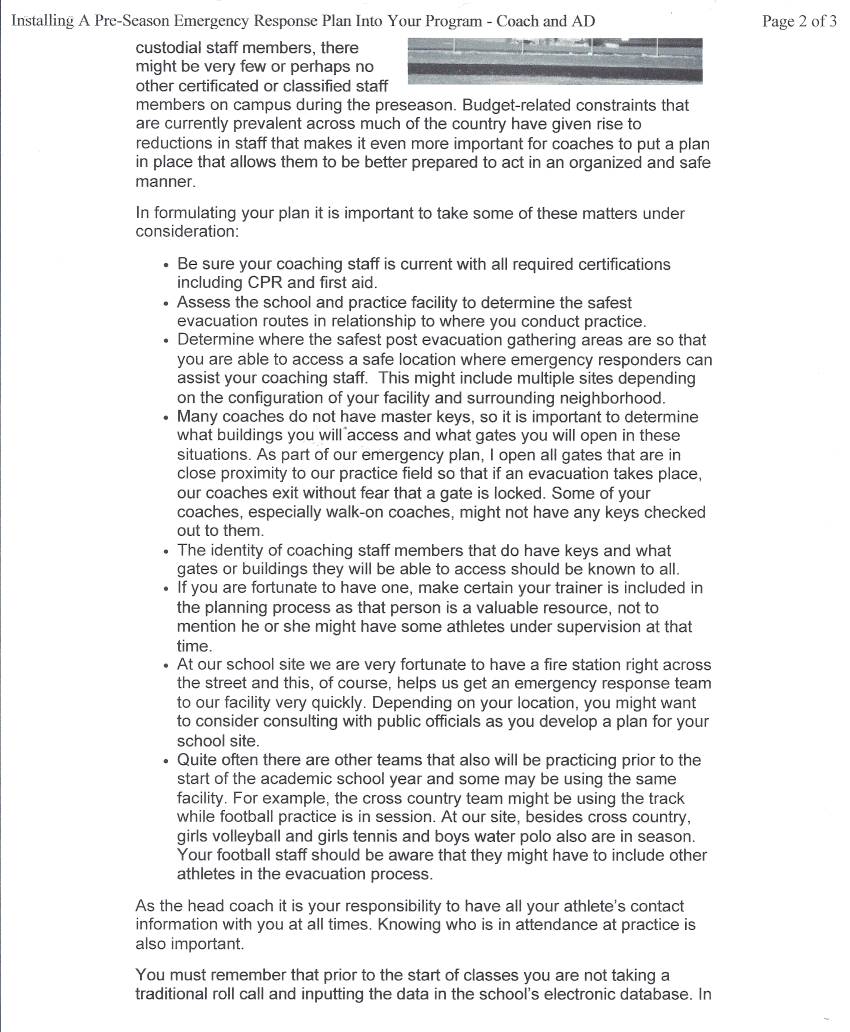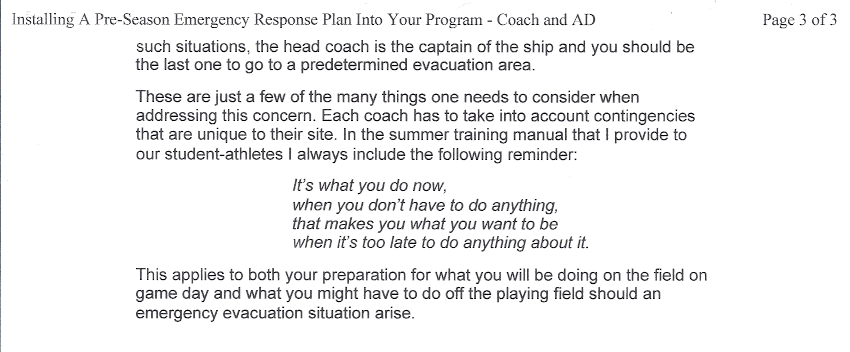I retired from coaching in 2012 after 36 years on the sideline coaching high school football, and in 2017, I retired from teaching. In order to stay busy, I decided to do some substitute teaching and agreed to join the varsity coaching staff at a local high school.
During my time away from football, I saw many changes in the high school game. Some of these changes came in the form of administrative directives and legislative mandates that were enacted in response to growing safety concerns related to on-field concussions.
Those changes were accompanied by a decrease in the number of students participating in football. This drop in participation has resulted in the disappearance of many freshman teams in our area, and it has also contributed to smaller roster sizes on the varsity and junior varsity levels.
During this time, I also started to see a drop in student attendance at varsity games and a concomitant decrease in general student enthusiasm. Although some of this can be attributed to concussion concerns, it has become obvious to me that there are other factors contributing to this transformation in high school football.
First, it is important to mention that these changes are more pronounced in certain areas of the country than they are in others. Many programs have high participation rates and continue to field teams on all levels, but if high school football is going to continue to flourish on a national level it is important that educators and coaches nationwide make a joint effort to address these changes.
A drop in student attendance is not just a concern for high schools. It is also a concern that has surfaced at the collegiate level. For the last few years there has been a growing national trend in decreased student attendance at football games, and in recent seasons, Alabama coach Nick Saban has commented about declines in student attendance and a general lack of student enthusiasm at home games.
These changes in high school football are driven in part by a multigenerational group dynamic that requires an understanding of the characteristics associated with Generation Z (also known as the "iGeneration"). Although there are no standard definitions for when a generation begins and ends, this group encompasses a time period that spans about 17 years. The oldest members would now be in their early 20s.
Some of the important events that impacted their lives included the Great Recession, home foreclosures, the student loan crisis, different wars and school shootings. They don’t remember a time before social media, and most things occur online. They are both tech-savvy and tech-dependent.
My observations in the classroom are that they want to make a difference in the world, and are generally very open-minded, respectful and tolerant of others. They are also highly educated, but this characteristic has come at a price.
Soon after the onset of the 21st century, I started to notice a few visible changes in student behavior both on and off the field. Students appeared to be more stressed by anything that was medical related.
An occurrence that became more noticeable to me was that some of my players were starting to cry when they suffered an injury on the field. Even a common injury like a sprained ankle would sometimes elicit this emotional response.
Over time, I started to see more professional athletes also crying when they suffered on the field injuries. An additional change that has become a national concern for educators is the sharp increase in the percentage of teenagers who suffer from depression, anxiety and other mental health issues.
As coaches and educators, we need to be aware of the possible causes for this change in our student-athletes’ behavioral profile, and we need to explore ways to better address their needs. Research indicates that more than half of all mental illnesses appear between the ages of 14 and 21.
We also know that the brain’s ability to adapt to change is really remarkable, and this continues even through the ages of 25 and 30. Coaches and educators must appreciate the fact that adolescence is an ideal time to identify opportunities for making positive changes. Schools should continue to work with healthcare professionals to formulate intervention plans that will positively impact behavior changes and learning.
Another growing concern is the youth suicide rate. Since 1980, suicide rates have increased nearly 130 percent in youth 10 to 14 years old, and, on average, over 5,000 middle and high school-aged youth attempt to die by suicide every day.
Our daily contact with students places us in a position to immediately take action when warning signs associated with suicide surface. Research indicates that nearly 80 percent of people who die by suicide gave some warning signs of their intentions.
One of the changes that often goes unmentioned in educator training courses is the transformation in traditional families in our country today. Statistics indicate that only about 46 percent of children are now living in households with two parents in their first marriage, but I have seen statistics that cite an even lower percentage.
There are many single moms and dads who do a tremendous job raising their children. There are also many grandparents, older siblings, and relatives who likewise provide adequate parenting for many children, but the fact remains that there is a big parenting void that exists in our country today.
This void is often filled through internet access and social media. Unfortunately, much of what we find in this domain can negatively impact adolescent mental health, and often hinders the development of our students’ emotional and moral intelligence.
This fact, coupled with the increase in social isolation and the increase in teenage mental disorders, has played a major role in what we are now experiencing with our youth today. As such, we shouldn’t discount the important role that teachers and coaches play in this context. Educators now fill this parenting void in much larger percentages than ever before.
When I hear people comment that athletics is not an important part of education or call for the curtailment or elimination of certain sports for financial or "safety" reasons, I simply ask the question, "To whom are these kids going to turn to for guidance?"
Those who are part of a traditional family will continue to rely on both parents, but those who aren’t as fortunate will be pushed into a higher risk category of children who are relying on the internet and social media for parental guidance. Increased social isolation must also be factored into this dynamic.
Professor Jean Twenge at San Diego State University has done some pioneering research into smartphone use by the iGeneration and writes in The Atlantic that "It’s not an exaggeration to describe iGen as being on the brink of the worst mental crisis in decades." She notes that this generation of children spends more time on their phone, in their room, alone and often distressed.
I was recently speaking to one of my former players who is now an assistant football coach at a Power Five conference school, and he told me that in his 30 years of coaching he has never had an easier time supervising his players. He said his players were very easy to coach, worked hard on the field and did everything asked of them in the weight room and in meetings.
He added that once they left the training complex, they generally stayed in their rooms and weren’t socializing as much as prior generations. My brother was a California parole officer for many years, and he made an interesting comment to me.
I asked him why statistics are showing that there is less juvenile crime now than there was in prior years. Statistics from 2017 show that law enforcement agencies made 59% fewer juvenile arrests than they did in 2008. He pointed out to me that kids are not hanging around as much in public places like they did in the past. I decided to visit places in the neighborhood where we grew up, and he was absolutely right.
The students that are coming through our school doors today have distinct learning styles, and many of them are not as interested in things that prior generations enjoyed. After the Super Bowl was played this year, I substituted at a local high school, and their teacher left an assignment that instructed the students to write a Spanish language commentary on the game.
I polled the students in two classes, and out of 51 total students, only 12 watched the Super Bowl. These results surprised me, and I went on to ask how many of them attended their school’s varsity football games. Only four said they went to a game.
These results call for a further investigation into the multi-generational setting that we now work and coach in. As a teacher I have come to realize that about two-thirds of the students that I now come in contact with are visual or kinesthetic learners.
The days of standing in front of a room and lecturing for 50 minutes are part of the distant past. Coaching is no different. I was recently speaking with a local reporter who asked me why I thought a veteran offensive coordinator had been fired by an NFL team in midseason last year.
I told the reporter that his dismissal might have been related to his teaching style. This coach is very knowledgeable, and I knew his mastery of the X’s and O’s was not a problem. The reporter told me that this was interesting because the new coordinator, who was younger, immediately decreased classroom meeting time in order to spend more time instructing the players on the field.
In this multigenerational educational and coaching setting, one must remember that all generations bring something that is of value to the classroom and the field. The Traditionalist Generation brought decisive leadership, loyalty, dedication and commitment to the workplace. These are characteristics that will always be important.
The baby boomers have a strong work ethic and bring mentorship to the workplace. They look for respect and work hard to secure it. Generation X is independent, innovative and are risk-takers. They are goal oriented, think outside the box and want to manage their own time. Millennials are confident, upbeat, full of self-esteem and willing to accept change. They are also very tolerant towards multiculturalism and internationalism.
As educators and coaches, we need to provide psychological classroom and workplace safety for all the individuals we work with. We must communicate clear expectations regarding the work to be performed, and we also need to examine and promote the team’s organizational strategy. Creating and maintaining an inclusive learning environment is also important.
Finally, we need to look for ways to encourage the iGeneration to become involved in more group activities, and this includes football. E-sports are here to stay, and school teams and leagues are being organized nationwide.
"Exergaming," the use of video games for physical activity, is one of many emerging innovative disciplines that are making their way into the 21st century classroom. High school coaches and athletic administrators should discover ways to tap this talent pool.
Perhaps we should look for multisport student-athletes who will compete in e-sport competitions on Thursday, and on Friday night take the field against these same opponents in the traditional football game.
We need follow the lead of our Generation X colleagues and start thinking outside the box. The athletic and coaching landscape in our schools is rapidly changing-not only in how we work, but also with whom we work. Chris Morris, a CNBC writer specializing in video games and consumer electronics, once said: "It is sometimes easy to forget that the king of the hill isn’t a permanent position, and companies that seem invincible might not be around forever in their current form — or, in some cases, in any form."
Morris reminds us that icons fall, and this could happen to high school football if we fail to heed the warning signs.
Rey Hernandez

